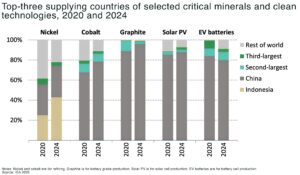According to BloombergNEF’s latest report on the energy transition, 2022 saw $388 billion spent on passenger EV – a 53% jump from 2021 that brings the total to $1 trillion spread over a decade. Admittedly, $25 trillion has been spent on all (including gas powered) passenger vehicles during that time but it’s important to note that nearly two thirds (60% to be exact) of EV spending has happened in just the last 18 months.
The Bloomberg report points to a few interesting facts, such as Japan’s failure to jump on the rising EV way in a timely fashion. Ironic considering the country’s reputation for automotive innovation. All Japanese brands accounted for less than 5% of global EV sales last year and not one of them made the top 10. China on the other hand accounted for more than 30% of sales.
That lag is costing Japanese brands market share. In China, Japanese automakers dropped from 25% of new car sales in 2020 to just 21% last year. Honda and Toyota are revamping their EV strategy but to be honest the Chinese have a massive lead. As the European automakers are finding out, moving into the EV space properly takes many years and many billions of dollars, and while that’s going on, China and U.S. EV giant, Tesla, will continue powering ahead.
At any rate, hitting the $1Trillion mark is an impressive feat for the EV sector, and while only about 3% of the 1.3 billion passenger cars on the road today are currently EV, my forecast is we’re going to see that percentage revised upwards year on year. And once we start hitting the end of the decade, when some countries have already earmarked for bans on new gas-powered vehicles, the EV percentage increase is going to get supercharged. Good times for the battery sector and for battery metals.
Anthony Milewski
Chairman, Nickel 28 Capital




















